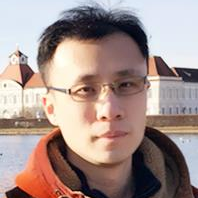Advances in Deep Fusion of Multi-Source Remote Sensing Images
A special issue of Remote Sensing (ISSN 2072-4292). This special issue belongs to the section "Remote Sensing Image Processing".
Deadline for manuscript submissions: closed (15 February 2025) | Viewed by 19198
Special Issue Editors
Interests: hyperspectral imaging; computer vision; pattern recognition and their applications to remote sensing; agriculture; environment; medicine
Special Issues, Collections and Topics in MDPI journals
Interests: hyperspectral imagery; remote sensing; intelligent processing; machine learning; pattern recognition
Special Issues, Collections and Topics in MDPI journals
Interests: remote sensing; hyperspectral image processing; machine learning
Special Issues, Collections and Topics in MDPI journals
Special Issue Information
Dear Colleagues,
With developments in sensor technology, remote sensing data have become increasingly diversified, e.g., hyperspectral image, panchromatic image, high resolution color image, multi-spectral image, airborne LiDAR data, and Synthetic-Aperture Radar data (SAR). The multi-source data promote a broad application of remote sensing in many fields, such as environmental monitoring, smart agriculture, intelligent transportation, etc. While affected by the working principle of sensors, complex weather, lighting conditions, and human interference, multi-source data have shown great differences in apparent structures, completeness, and accuracy. To this end, multi-source data fusion is highly valuable to compensate for the information acquisition defects of a single sensor, and it helps enhance our comprehensive and effective perception of complex scenes. However, the existing deep fusion technology often neglects strong missing, low signal-to-noise ratio, high pseudo, and other factors, resulting in insufficient robustness of the fusion model, poor quality, and low credibility of the fusion results. To address these issues, this Special Issue aims to study the advances of multi-source remote sensing data fusion to improve the quality and credibility of multi-source data. Topics may range from overview, deep remote sensing image fusion methods, performance evaluation, and applications of fused images. Articles may address, but are not limited to, the following topics:
- Review of multi-source image fusion;
- Advanced processing methods of remote sensing images, e.g., denoising, deblurring, super-resolution, etc.;
- Advanced remote sensing image augmentation methods concerning insufficient or imbalanced training data;
- Advanced deep fusion methods of multi-source remote sensing images, e.g., hyperspectral image, panchromatic image, high resolution color image, multi-spectral image, airborne LiDAR data, and Synthetic-Aperture Radar data (SAR);
- Supervised, weak supervised, or unsupervised representation learning methods for remote sensing images;
- Application of remote sensing image fusion, e.g., classification, change detection, anomaly detection, object detection, disaster monitoring, scene recognition, etc.;
- Light-weight fusion networks for remote sensing image fusion.
Dr. Jun Zhou
Prof. Dr. Qian Du
Prof. Dr. Danfeng Hong
Dr. Chenhong Sui
Guest Editors
Manuscript Submission Information
Manuscripts should be submitted online at www.mdpi.com by registering and logging in to this website. Once you are registered, click here to go to the submission form. Manuscripts can be submitted until the deadline. All submissions that pass pre-check are peer-reviewed. Accepted papers will be published continuously in the journal (as soon as accepted) and will be listed together on the special issue website. Research articles, review articles as well as short communications are invited. For planned papers, a title and short abstract (about 250 words) can be sent to the Editorial Office for assessment.
Submitted manuscripts should not have been published previously, nor be under consideration for publication elsewhere (except conference proceedings papers). All manuscripts are thoroughly refereed through a single-blind peer-review process. A guide for authors and other relevant information for submission of manuscripts is available on the Instructions for Authors page. Remote Sensing is an international peer-reviewed open access semimonthly journal published by MDPI.
Please visit the Instructions for Authors page before submitting a manuscript. The Article Processing Charge (APC) for publication in this open access journal is 2700 CHF (Swiss Francs). Submitted papers should be well formatted and use good English. Authors may use MDPI's English editing service prior to publication or during author revisions.
Keywords
- multi-source image fusion
- image augmentation
- representation learning
- image classification
- change detection
- anomaly detection
- object detection
- light-weight network
- denoising
- deblurring
- super-resolution
Benefits of Publishing in a Special Issue
- Ease of navigation: Grouping papers by topic helps scholars navigate broad scope journals more efficiently.
- Greater discoverability: Special Issues support the reach and impact of scientific research. Articles in Special Issues are more discoverable and cited more frequently.
- Expansion of research network: Special Issues facilitate connections among authors, fostering scientific collaborations.
- External promotion: Articles in Special Issues are often promoted through the journal's social media, increasing their visibility.
- Reprint: MDPI Books provides the opportunity to republish successful Special Issues in book format, both online and in print.
Further information on MDPI's Special Issue policies can be found here.







